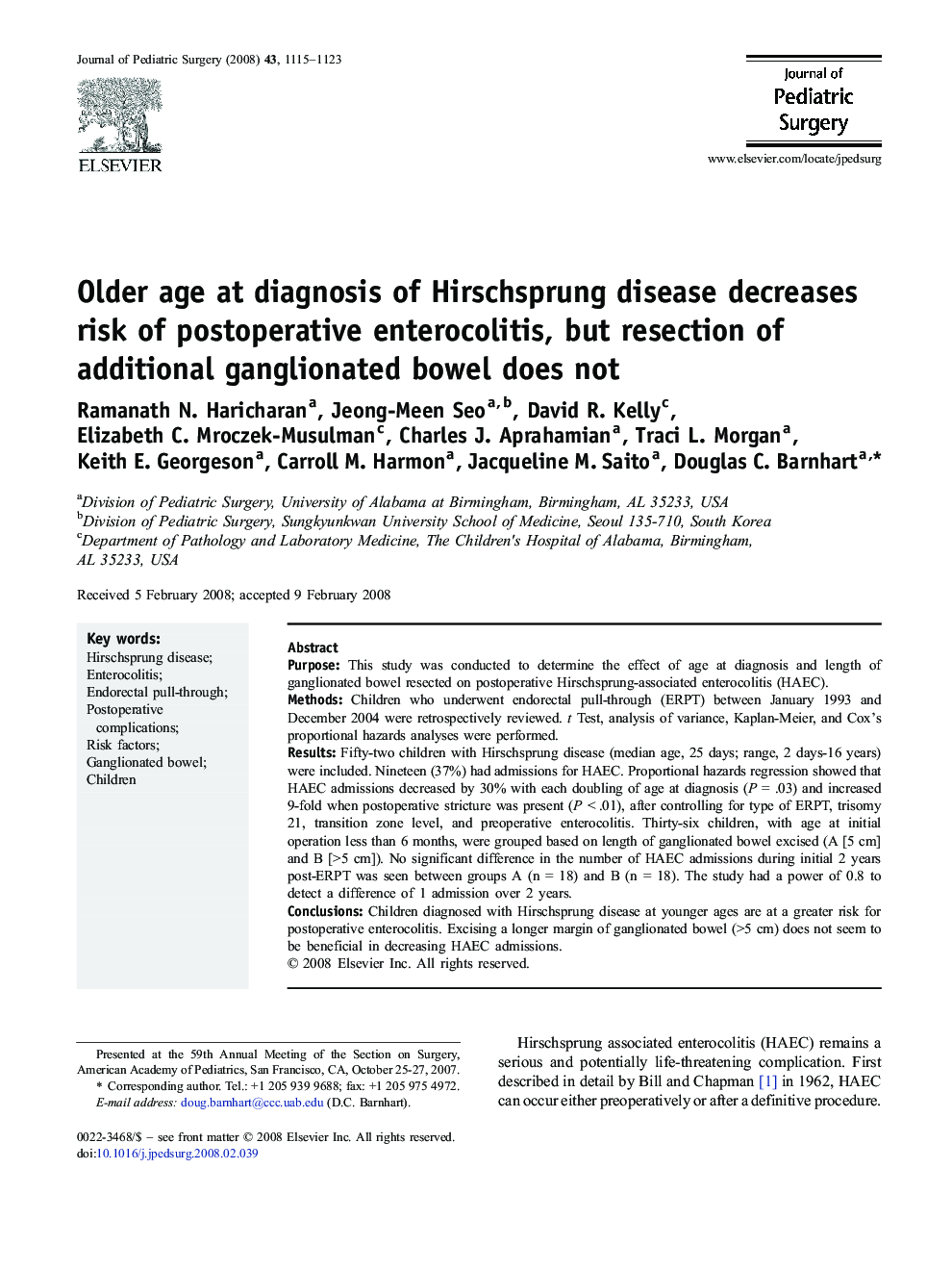| Article ID | Journal | Published Year | Pages | File Type |
|---|---|---|---|---|
| 4158571 | Journal of Pediatric Surgery | 2008 | 9 Pages |
PurposeThis study was conducted to determine the effect of age at diagnosis and length of ganglionated bowel resected on postoperative Hirschsprung-associated enterocolitis (HAEC).MethodsChildren who underwent endorectal pull-through (ERPT) between January 1993 and December 2004 were retrospectively reviewed. t Test, analysis of variance, Kaplan-Meier, and Cox's proportional hazards analyses were performed.ResultsFifty-two children with Hirschsprung disease (median age, 25 days; range, 2 days-16 years) were included. Nineteen (37%) had admissions for HAEC. Proportional hazards regression showed that HAEC admissions decreased by 30% with each doubling of age at diagnosis (P = .03) and increased 9-fold when postoperative stricture was present (P < .01), after controlling for type of ERPT, trisomy 21, transition zone level, and preoperative enterocolitis. Thirty-six children, with age at initial operation less than 6 months, were grouped based on length of ganglionated bowel excised (A [5 cm] and B [>5 cm]). No significant difference in the number of HAEC admissions during initial 2 years post-ERPT was seen between groups A (n = 18) and B (n = 18). The study had a power of 0.8 to detect a difference of 1 admission over 2 years.ConclusionsChildren diagnosed with Hirschsprung disease at younger ages are at a greater risk for postoperative enterocolitis. Excising a longer margin of ganglionated bowel (>5 cm) does not seem to be beneficial in decreasing HAEC admissions.
